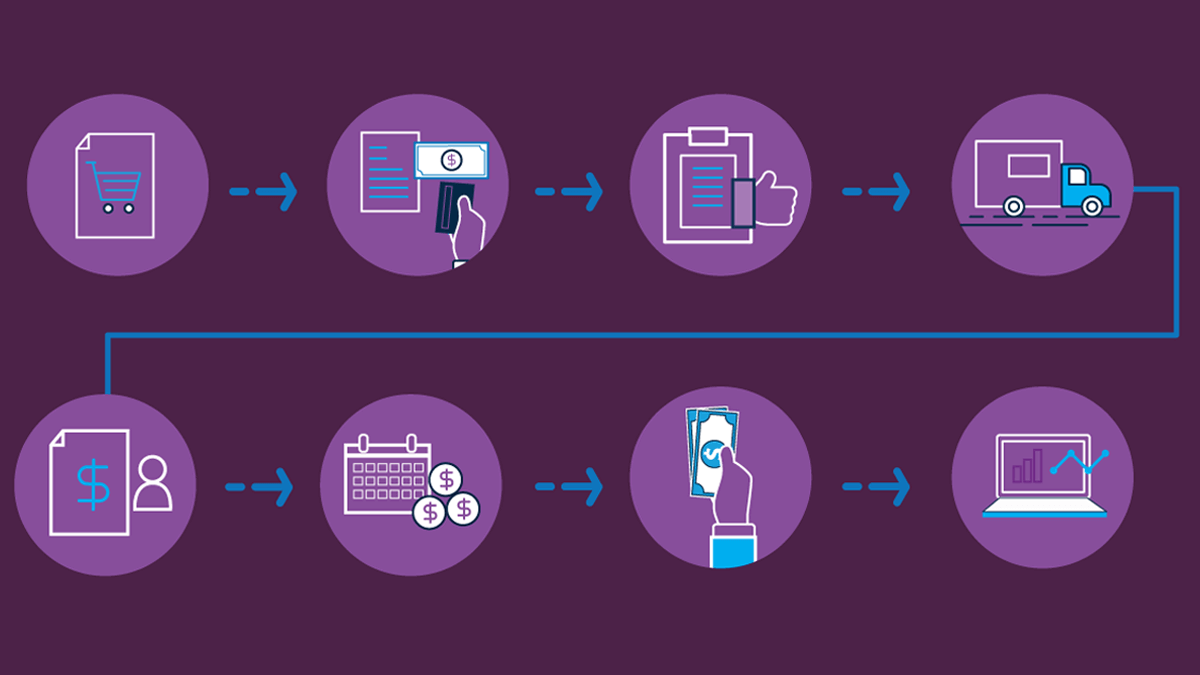Simplifying Revenue Reconciliation in Ad Sales:
A Salesforce-Powered Approach
In the dynamic and ever-evolving media landscape, revenue reconciliation remains a critical yet often complex process for ad sales teams. The intricate nature of ad sales campaign management, coupled with the sheer volume of diversity of ad types and campaign attributes, can lead to discrepancies and inefficiencies, hindering timely revenue recognition and accurate financial reporting. To address these challenges, media companies are increasingly turning to Salesforce Media Cloud, a robust CRM + Middle Office/Order Management + Analytics platform that offers solutions tailored to streamline and simplify revenue reconciliation in ad sales.
The Challenge of Revenue Reconciliation
Revenue reconciliation within the media industry presents unique challenges due to the dynamic and multifaceted nature of advertising sales. The variety of ad types—ranging from traditional print to digital display, and increasingly complex programmatic advertising—requires sophisticated tracking across different platforms and formats. Revenue models add another layer of complexity: Cost per Mille (CPM), Cost per Click (CPC), and other performance-based metrics necessitate precise tracking and matching of ad delivery to revenue.
The process becomes further complicated by the intricate web of systems utilized to manage the lifecycle of an ad sale. CRM systems forecast sales, while order management systems track commitments. Ad trafficking systems, which can vary within the same organization, must then ensure the correct delivery of these commitments. Finally, billing systems generate invoices that reflect the agreed terms. Each of these systems is a potential point of failure for data consistency, leading to the arduous task of reconciling what was sold, what was delivered, and what was billed.
Compounding the issue, operational headcount in media companies often balloons as a response to these challenges. Companies frequently hire more personnel in an attempt to manage the complexities manually. However, this solution is not scalable and is prone to human errors, which can introduce significant discrepancies in financial data. These errors not only cause delays in revenue recognition, which can impact financial reporting and forecasting, but also increase the risk of non-compliance with accounting standards.

The reconciliation process, therefore, is not simply a matter of matching figures between accounting and sales systems—it’s a multidimensional puzzle that requires a deep understanding of the ad sales, delivery, and billing intricacies unique to the media sector. A comprehensive solution would not only streamline these disparate systems but also accommodate the rapid evolution of ad products and revenue models in the media landscape.
In conclusion, for large media organizations to overcome the hurdles of revenue reconciliation, they must invest in integrated systems that can handle the complexity of their operations. Until then, they will continue to struggle with inefficiencies, inaccuracies, and the excessive operational costs associated with a disjointed and labor-intensive reconciliation process.
In addition to Media Cloud, Revenue Cloud, another Salesforce product, offers a robust revenue recognition engine that automates the complex calculations and allocations required for media companies. Media Cloud integrates with Revenue Cloud Billing to automate the process of raising and delivering invoices back to advertisers and agencies and can handle various revenue recognition scenarios, such as including upfront, accrual, and performance-based contracts. This automation not only streamlines the revenue recognition process but also reduces the risk of errors and ensures compliance with accounting standards.

The Benefits of a Salesforce-Powered Approach
Adopting a Salesforce-powered approach to revenue reconciliation in ad sales offers a multitude of benefits to media companies, including:
Improved Accuracy
Salesforce’s centralized data management and seamless revenue reconciliation capabilities significantly enhance the accuracy of revenue-related reporting.
Increased Efficiency and Productivity
By automating what is oftentimes a highly manual process for ad sales organizations, Salesforce Media Cloud frees up valuable time for ad sales teams to focus on revenue-generating activities and ad operations teams to focus on in-flight campaign management.
Enhanced Visibility and Insights
Salesforce provides real-time visibility into revenue data and provides users a full picture of revenue-spanning forecasts vs. booked vs. actuals, enabling teams to make informed decisions and identify potential discrepancies early on.
Reduced Risk of Errors and Disputes
Salesforce Media Cloud’s automation and data integrity measures minimize the risk of errors and disputes with their advertisers and agencies, fostering stronger relationships with external customers and partners.
Leveraging Salesforce for Revenue Reconciliation Transformation
Implementing a Salesforce-powered approach to revenue reconciliation requires a well-defined strategy and careful planning.
Media companies should consider the following nine steps:
1. Assess Current Processes
Evaluate existing revenue reconciliation processes to identify areas for improvement and potential risks. This assessment involves analyzing the current state of data management, process efficiency, and any existing pain points in the reconciliation process.
2. Define Goals and Objectives
Clearly define the desired outcomes, such as improved accuracy, increased efficiency, and enhanced visibility. Understand what success looks like and create measurable goals that can guide your implementation efforts.
3. Select the Right Salesforce Products
Choose the appropriate Salesforce products, such as Media Cloud and Revenue Cloud, to align with specific needs and goals. Customize these products to match the unique aspects of your media contracts and business operations.
4. Develop a Comprehensive Implementation Plan
Create a detailed plan that outlines the implementation process, including data migration, user training, and change management strategies. This plan should address how Salesforce solutions will integrate with your existing systems and how they will impact various stakeholders in your organization.
5. Partner with Experienced Salesforce Consultants
Engage experienced Salesforce consultants to provide guidance, expertise, and support throughout the implementation and transformation journey. These consultants can help tailor Salesforce solutions to your specific needs, ensuring a successful transition.
6. The Role of Data Integration
A critical aspect of simplifying revenue reconciliation in ad sales is data integration. Salesforce’s capabilities extend beyond its suite of products. It can integrate seamlessly with other systems and data sources media companies use, providing a comprehensive view of your ad sales operations. This integration ensures that data flows smoothly between different departments and systems, reducing data silos and enabling a holistic view of your revenue reconciliation process.
7. Harnessing AI and Predictive Analytics
Salesforce’s prowess in artificial intelligence (AI) and predictive analytics can be a game-changer for media companies. With AI-driven insights, you can gain a deeper understanding of customer behavior and market trends. These insights can inform your ad sales strategies and improve revenue forecasting, allowing you to make data-driven decisions that drive revenue growth.
8. Adapting to Evolving Industry Standards
The media industry constantly evolves, with new regulations and standards emerging regularly. Salesforce, as a dynamic platform, adapts to these changes. It can be configured to ensure compliance with the latest accounting and industry regulations, reducing the risk of financial discrepancies and non-compliance.
9. Building Stronger Customer Relationships
Beyond revenue reconciliation, Salesforce offers robust customer relationship management (CRM) capabilities. These features allow ad sales teams to nurture stronger customer relationships, providing a personalized experience and tailored advertising solutions.
The insights from Salesforce can help you better understand customer needs and preferences, leading to more effective ad campaigns and higher revenue.
Case Study: A Successful Salesforce Implementation
To illustrate the benefits of a Salesforce-powered approach to revenue reconciliation, let’s delve into a real-world example. Recently, V2 had the privilege of working with a leading media conglomerate, facing significant challenges in reconciling revenue across its diverse ad sales operations. Their manual processes were time-consuming, error-prone, and left room for revenue leakage.
This company decided to implement Salesforce’s Media Cloud solutions. Through careful assessment and planning, V2 was able to tailor the technology to their exact needs, creating a seamless integration with their existing ad sales tech stack.
With the aid of experienced Salesforce consultants, the implementation process was smooth and efficient, and the results were compelling. This company experienced a 32% reduction in the time required for revenue reconciliation, leading to faster and more accurate financial reporting. Errors and disputes were reduced by 45%, strengthening relationships with their advertisers and partners. The insights provided by Salesforce empowered their ad sales teams to create more effective advertising strategies, resulting in a 15% increase in revenue in the first year.
Revenue reconciliation in ad sales is more time-consuming and error-prone than ever. By leveraging Salesforce’s powerful CRM platform, media companies can streamline and simplify revenue reconciliation, ensuring accuracy, compliance, and efficiency while leading to faster revenue recognition. With Salesforce’s centralized data management, automated revenue reconciliation capabilities, real-time insights, and seamless data integration, ad sales teams can focus on what they do best – driving revenue growth and maximizing profitability.
Building Trust Starts With A Conversation.
Simplifying revenue reconciliation in ad sales is no longer a distant dream. It’s a reality made possible by Salesforce, the industry leader in CRM and revenue management solutions. Embrace the future of ad sales with Salesforce and pave the way for growth.
If you are interested in learning more about how Salesforce can help you improve your revenue reconciliation activities or drive efficiency around your ad sales processes, please reach out to V2, as we have a team of experienced Salesforce consultants who can help you assess your current processes, help define your goals, and develop a comprehensive implementation plan.
Together, we can help you transform your revenue reconciliation process and achieve your financial objectives.


